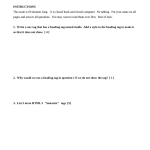Unleash The Power Of Software Development User Stories: Transform Ideas Into Action
Software Development User Stories
Introduction
Welcome, Readers! In today’s digital era, software development plays a crucial role in shaping various industries. One essential aspect of software development is user stories. In this article, we will explore the concept of software development user stories and how they contribute to the success of projects. So, let’s dive in and discover the fascinating world of user stories!
1 Picture Gallery: Unleash The Power Of Software Development User Stories: Transform Ideas Into Action

In this article, we will cover:
What are software development user stories?
Who is involved in creating and using user stories?
When and where are user stories utilized?
Why are user stories important?
How to create effective user stories?
The advantages and disadvantages of user stories
Frequently Asked Questions about user stories

Image Source: inflectra.com
What are Software Development User Stories?
Software development user stories are concise, simple, and informal descriptions of desired functionality from the perspective of an end user or customer. They serve as a communication tool between the development team and stakeholders, capturing the who, what, and why of a feature or requirement.
These user stories are often written in a structured format, commonly known as the Connextra format, consisting of:
Role: The user or persona
Goal: The desired outcome
Benefit: The value or benefit to the user
By using this format, user stories provide a clear understanding of the user’s needs and allow for efficient collaboration between developers, designers, and product owners.
Who is Involved in Creating and Using User Stories?
Creating user stories is a collaborative effort that involves various stakeholders. The primary participants include:
Product Owners: They represent the customer and are responsible for prioritizing and managing the product backlog.
Developers: They work closely with the product owners to understand and implement the desired functionality.
Designers: They contribute to user story creation by considering the user interface and overall user experience.
Customers/Users: Their input and feedback are essential in shaping user stories and ensuring that the developed software meets their needs.
Together, these individuals form a cross-functional team, collaborating to create user stories that accurately represent the requirements and expectations of the end user.
When and Where are User Stories Utilized?
User stories are utilized throughout the software development lifecycle. They serve as a foundation for project planning, development, and testing. The following are common scenarios where user stories are utilized:
Sprint Planning: User stories are reviewed, estimated, and prioritized for inclusion in upcoming sprints.
Development: User stories guide the development team in implementing the necessary features and functionality.
Testing: User stories form the basis for creating test cases to ensure that the software meets the defined requirements.
Customer Feedback: User stories can be shared with customers for validation and feedback.
Moreover, user stories are typically stored and managed in an Agile project management tool, making them easily accessible and traceable throughout the development process.
Why are User Stories Important?
User stories offer several advantages that contribute to the success of software development projects:
Customer-Centric Approach: User stories place the focus on the end user, ensuring that the developed software meets their needs and expectations.
Improved Communication: User stories facilitate effective communication between team members, resulting in better collaboration and understanding of requirements.
Flexibility and Adaptability: User stories allow for flexibility, enabling changes and updates to be incorporated smoothly during the development process.
Enhanced Prioritization: User stories assist in prioritizing features and functionalities, ensuring that the most valuable ones are implemented first.
Increased Efficiency: User stories promote incremental development, enabling the delivery of working software in shorter iterations.
Despite their benefits, user stories also have some disadvantages. Let’s explore them in the next section.
Advantages and Disadvantages of User Stories
Advantages:
Increased Customer Focus: User stories prioritize the needs of the end user, resulting in a customer-centric approach to software development.
Improved Collaboration: User stories facilitate effective communication and collaboration between stakeholders, leading to a better understanding of requirements.
Flexibility: User stories allow for changes and updates to be incorporated smoothly, adapting to evolving project needs.
Incremental Delivery: User stories promote iterative development, enabling the delivery of valuable features in shorter cycles.
Easy Prioritization: User stories assist in prioritizing features based on user needs, ensuring the most important ones are addressed first.
Disadvantages:
Insufficient Detail: User stories may lack sufficient detail, leading to ambiguity and misinterpretation of requirements.
Dependency on User Involvement: User stories heavily rely on user input and feedback, which may be challenging to obtain in some cases.
Incomplete Picture: User stories may not capture the full complexity of a requirement, potentially leading to missed functionalities.
Learning Curve: Creating effective user stories requires practice and experience, which may pose a challenge for teams new to the concept.
Time Investment: Crafting and maintaining user stories can be time-consuming, especially for large-scale projects with numerous stakeholders.
Frequently Asked Questions (FAQ)
Q: How do I create effective user stories?
A: To create effective user stories, it is essential to involve all relevant stakeholders, focus on user needs, and use a structured format such as the Connextra format.
Q: Can user stories be changed during the development process?
A: Yes, user stories are flexible and can be modified as needed. They allow for adaptability to changes during the development process.
Q: What happens if a user story is not clear or lacks detail?
A: In such cases, it is crucial to engage in further discussions and clarifications with the relevant stakeholders to ensure a clear understanding of the requirements.
Q: Are user stories only applicable to Agile methodologies?
A: Although user stories are commonly used in Agile methodologies, they can also be beneficial in other development approaches that prioritize user needs.
Q: How can user stories be prioritized?
A: User stories can be prioritized based on their value to the end user, business goals, and dependencies with other features or functionalities.
Conclusion
In conclusion, software development user stories serve as invaluable tools in capturing and communicating user requirements. By adopting a customer-centric approach, teams can ensure that the developed software meets the needs and expectations of the end user. While user stories offer numerous advantages, it is essential to address their limitations and invest time in creating effective and detailed stories. So, embrace the power of user stories and enhance the success of your software development projects!
Final Remarks
Disclaimer: The information provided in this article is for educational purposes only. The author and publisher do not guarantee the accuracy, completeness, or usefulness of any information mentioned herein. Readers are advised to consult professionals in the field for further guidance and assistance.
This post topic: Programming


